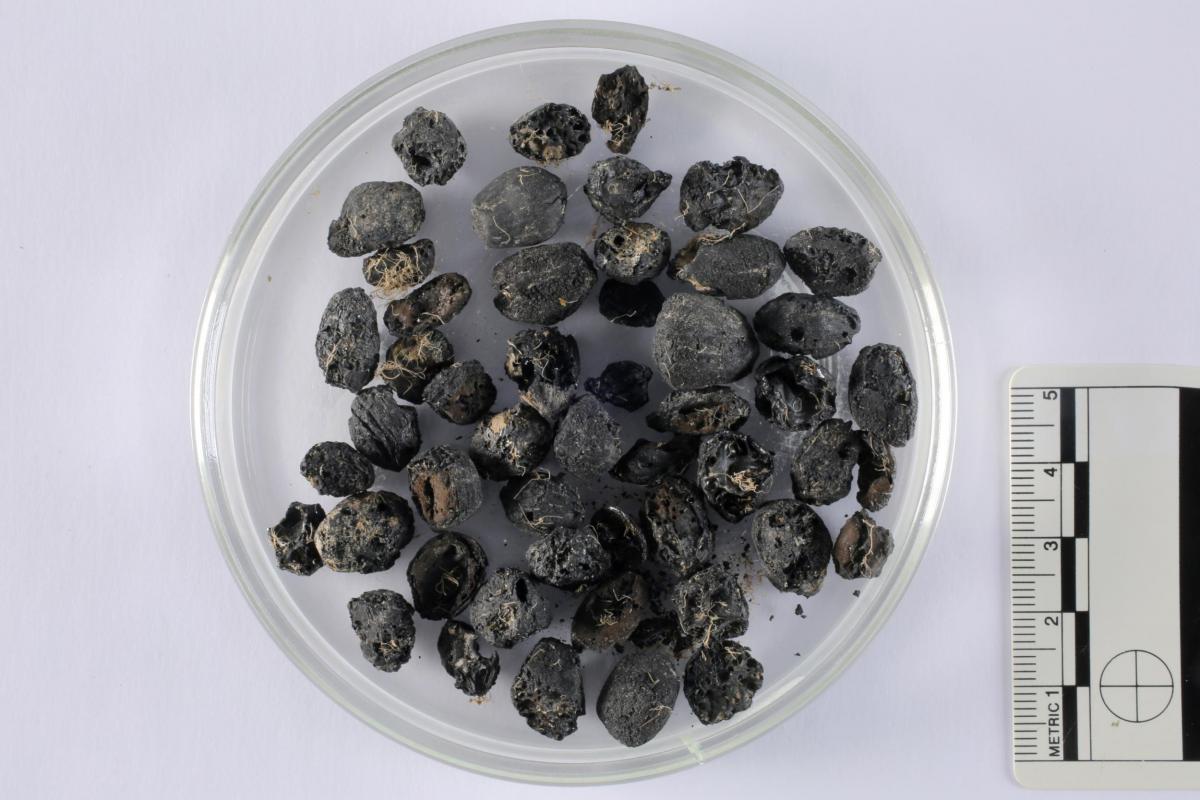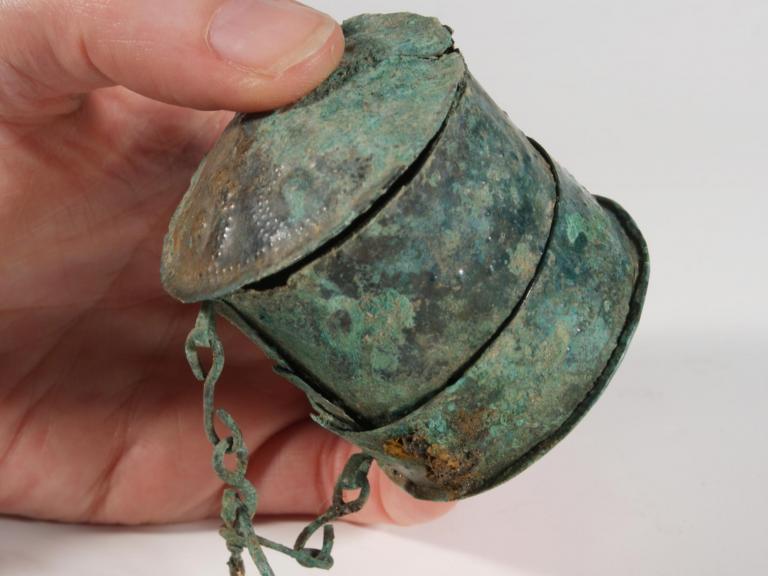Hazelnut shell fragments are almost ubiquitous in any sort of archaeological site. From any chronology across temperate Europe, we find shells that (most likely) have been discarded into hearths after they have been cracked open to reach the tasty kernels inside. It is only rarely that we encounter whole (including the kernel!) hazelnuts.
This model was inspired by some of the Neolithic pits found recently during our excavations at Bulford. Similar examples have been found in other prehistoric contexts in Atlantic Europe, usually from the Mesolithic to the Middle Bronze Age.
With this model, we wanted to represent one of the hypotheses to explain accidental carbonisation of hazelnuts in roasting pits, which has been backed by experimental archaeology trials undertaken by several researchers.
Model showing the section of an experimental hazelnut roasting oven, by Andy Sole.
Hazelnuts would be roasted to improve their flavour (if you have never eaten a roasted hazelnut, you definitely should give it a go!) or improve their long term storage potential – experiments show that dried hazelnuts can be kept in storage pits for several months and be a supply of nutritious food in winter, when few other fresh plant products would have been available (remember this is before the time of supermarkets!).
Before the invention of pottery, hazelnut drying could be undertaken by smoking, placing the nuts on hazel ‘trellises’ above hearths (this is still done in remote villages in Northern Spain) or by roasting in pits lined with sand (as in the case of our model). Pottery may have allowed for roasting of hazelnuts within vessels.
In all instances, a small proportion of the hazelnuts would accidentally end up being completely carbonised and, therefore, inedible. This is fortunate for us archaeologists, as it is thanks to those cooking accidents the plant remains are preserved in most archaeological deposits, making our studies possible.

The model forms part of our current exhibition in the lobby of Wessex Archaeology’s Portway House, keep your eyes peeled! After being exhibited, the model will join the growing Environmental Archaeology model collection started a few months ago and will travel around community engagement events spreading the word about our work. The model also shows how greatly talented some of our field archaeologists are. Thank you, Andy Sole, for this masterpiece!
